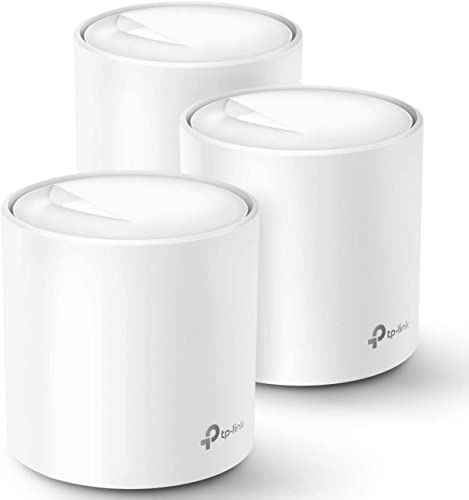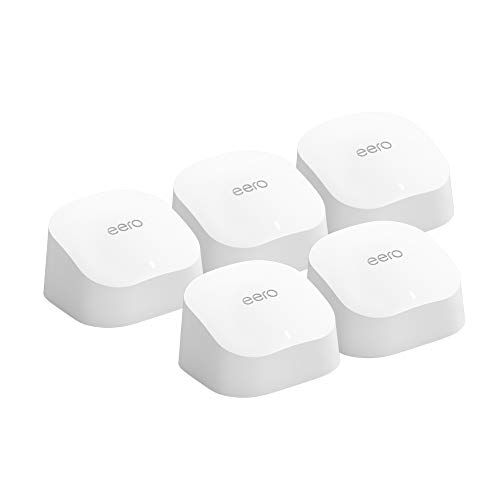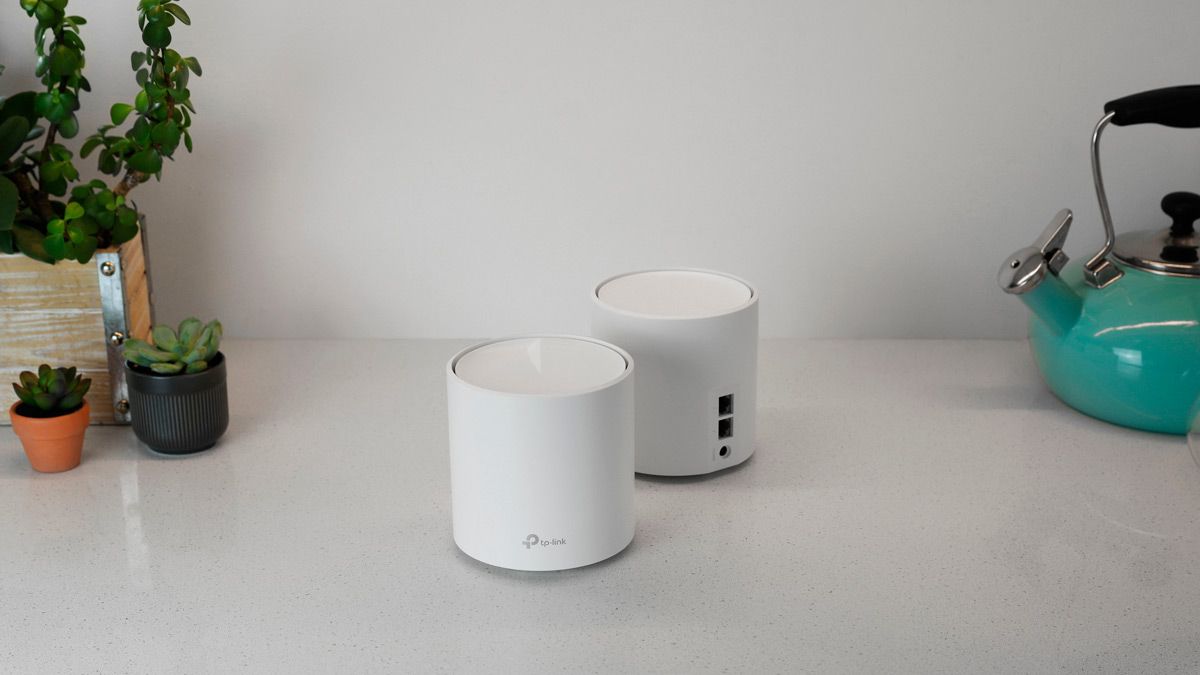Mesh router platforms are commonly sold in multi-packs, but exactly how many of the individual mesh nodes do you need for your home? Here's what you should consider while shopping.
Consider Your Home's Construction and Layout
When it comes to planning out your mesh network, we're not going to start by throwing out a broad recommendation based on the square footage of your home (though if you'd like one, we'll talk about broad recommendations in a moment).
Instead we're going to start by highlighting several factors, in addition to square footage, that have a strong influence on how many mesh nodes you might need to provide adequate coverage and a satisfactory experience.
What Layout Is Your Home's Floorplan?
Square footage is, to be sure, an important factor. But not all square footage is equal when it comes to Wi-Fi coverage. A sprawling single-story 4,000 square-foot ranch-style home, for example, has a significantly wider footprint than an equivalent 4,000 square-foot colonial home with a boxy two-story design.

TP-Link Deco X20 Wi-Fi 6 Mesh System
This mesh three-pack supports Wi-Fi 6, WPA3, and will cover most homes with wall-to-wall Wi-Fi.
From a Wi-Fi signal propagation standpoint, it's much less demanding to broadcast a signal across a smaller ground floor and straight up into the rooms above than it is to broadcast a signal the whole length of a larger single-story home.
What Type of Construction Is Your Home?
The radio waves broadcast from your Wi-Fi router, be it a mesh system or a traditional router, are a type of energy and are absorbed to a greater or lesser degree by the materials in your home.
Some materials, like drywall, are practically transparent to Wi-Fi radio waves. Others, like lathe-plaster walls with wire-mesh backing, are more disruptive. On the more extreme end, if your home is poured concrete reinforced with rebar, it's practically a Wi-Fi signal tomb.
In addition to what the floors and walls are made of, consider the contents of the house itself. Your home might be wood and drywall, but if it's built around a central utility room packed with large metal devices, a water heater, and other Wi-Fi absorbing things, that impacts your Wi-Fi coverage.
How Far Do Your Need the Signal to Reach?
Both in regard to the layout of your home and the material it is constructed from, it's useful to think about the problem in terms of distance between mesh nodes (and between mesh nodes and the end users) in terms of distance and not strictly square footage.

eero 6 5-pack
For larger homes, especially if you want backyard coverage, more mesh nodes are in order.
A 2.4 GHz Wi-Fi signal can travel about 150 feet through your average structure, and a 5 GHz signal can travel about 50 feet. The strength of the signal in both cases degrades the further it has to travel (and what it has to travel through in the process).
Think about all the places you want a strong Wi-Fi signal in your home. Don't forget the yard too---if you want to play on your phone in your backyard gazebo or stream music to your workshop in a detached garage, you need to factor in those distances.
Recommended Mesh Nodes by Square Footage
You can check manufacturer recommendations for how many mesh nodes you should place in your home, but let's be honest here. It's probably wise to take their recommendations with a grain of salt.
While they certainly have an incentive to be truthful in so far as wildly overestimating the capability of their hardware would lead to disappointed consumers, in the same breath, it's also in their best interest to make their products more appealing---an issue that makes shopping for Wi-Fi in general confusing.
It's more than reasonable to reduce whatever the advertised coverage area is by 25-50% in service of getting better coverage---erring on the side of 50% if your home is very sprawling or made from Wi-Fi blocking materials.
If a company says their 3-node mesh system covers 6,000 square feet, it's probably wise to plan on it covering 3,000 square feet. Naturally, the construction of your home and how well you place your mesh nodes also plays a role.
With that in mind, here are our conservative coverage recommendations based on square footage alone---factor in the previous section to tailor the recommendations for your home.
|
Square Footage |
Recommended Mesh Configuration |
|---|---|
|
1000 Square Feet or Less |
1 mesh router |
|
1000 to 2500 Square Feet |
1 mesh router + 1 mesh node |
|
2500 to 3500 Square Feet |
1 mesh router + 2 mesh nodes |
|
3500 to 4500 Square feet |
1 mesh router + 3 mesh nodes |
|
4500 Square Feet and Above |
1 mesh router + 4 or more mesh nodes |
There are a few things worth noting about our recommendations. First, you might find it curious that we recommend single mesh router for spaces under a thousand square feet.
By all means, you can buy a two-pack and use it (especially if you want to cover your backyard), but there are plenty of reasons to use a single mesh router all by itself without actually building a true mesh network.
We also tapered off our recommendations at 4,500 square feet. The majority of consumer mesh manufacturers, when you read the fine print, recommend using 4-5 nodes at most for an optimum experience.
At a certain point, it doesn't make sense to cover the space with a strictly wireless mesh system, and you should consider either using a wired backhaul for your mesh system or switching to a more robust access-point-based system like Ubiquiti.
A large home with a lot of space to cover and a lot of really demanding applications needs an enterprise solution and not a dozen mesh nodes strung together.
Ultimately, however, the demands of your home, both in terms of its physical structure and how you use Wi-Fi in it, will determine what works best for you.
The beauty of a mesh system is that if you buy a two-pack and realize you need one or two more nodes you can simply buy more and seamlessly extend your network.

